15 Shade-Loving Flowers That Keep Their Color Through Fall
As the seasons change, many flowers fade, but there are still vibrant blooms that can shine through fall. The key lies in selecting the right flowers for shady spots in your garden. These shade-loving flowers not only endure the cooler months but also retain their bright, cheerful hues. If you want to keep your garden looking lush and lively, these varieties are perfect for you.
This post may contain affiliate links, which helps keep this content free. Please read our disclosure for more info.
Astilbe
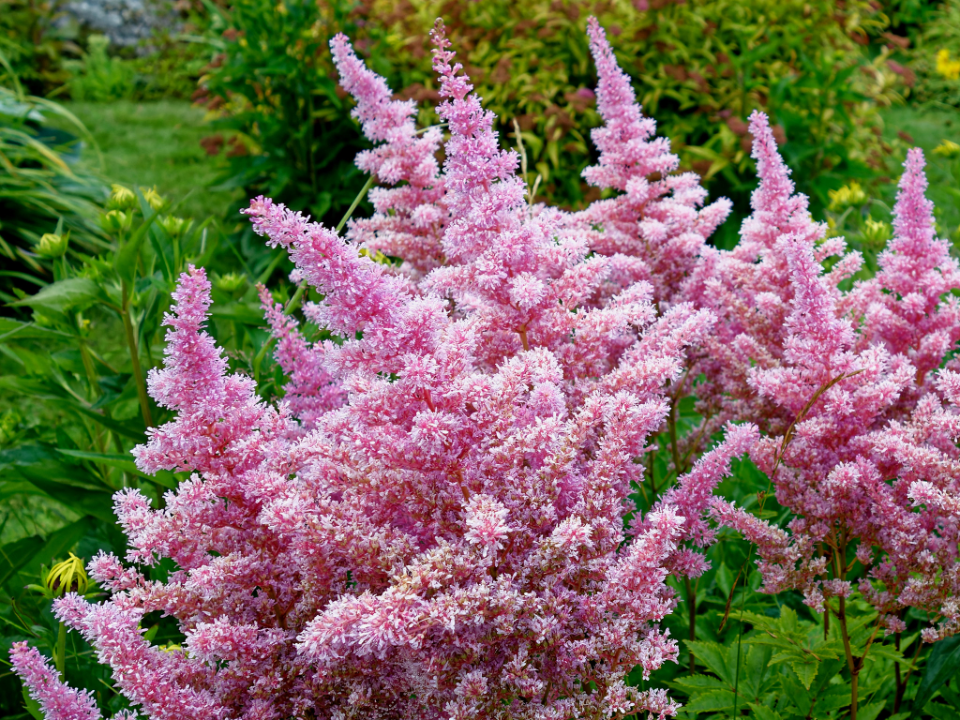
Astilbe is a perennial that blooms in late summer and into fall. Known for its feathery, plume-like flowers, it thrives in shaded gardens. This flower is available in a variety of colors, including red, pink, and white. The vibrant blooms last well into the fall, making it a great addition to any shady corner.
Astilbe is also a low-maintenance plant that does well in moist, well-drained soil. It can tolerate some sunlight but prefers the shade to really flourish. The dark green foliage provides texture throughout the year. As the season changes, Astilbe’s blooms continue to brighten up the garden.
Japanese Anemone
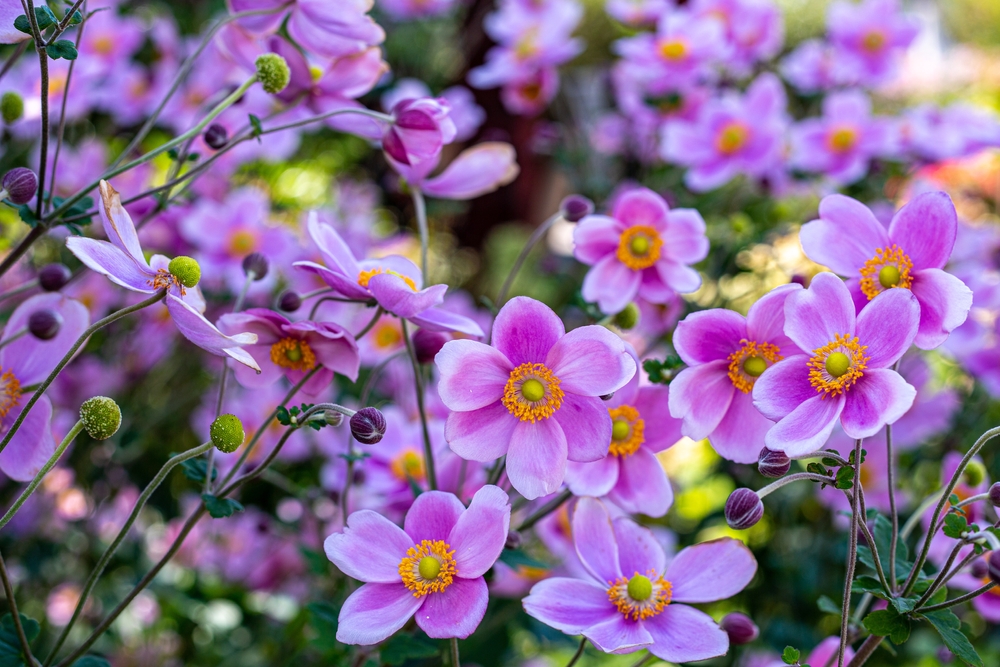
The Japanese Anemone is a standout in the fall garden, with its delicate white or pink flowers. It thrives in partial to full shade and can handle a variety of soil types. This flower blooms from late summer to early fall, offering consistent color as other plants begin to fade. Its elegant appearance adds a soft touch to any garden.
Japanese Anemones are known for their ability to grow in shaded areas without sacrificing bloom quality. Their long-lasting flowers often attract pollinators like bees and butterflies. As they continue to bloom through fall, they offer a beautiful contrast to darker corners of your garden. This flower is easy to grow and maintain, making it perfect for both beginner and experienced gardeners.
Heuchera (Coral Bells)
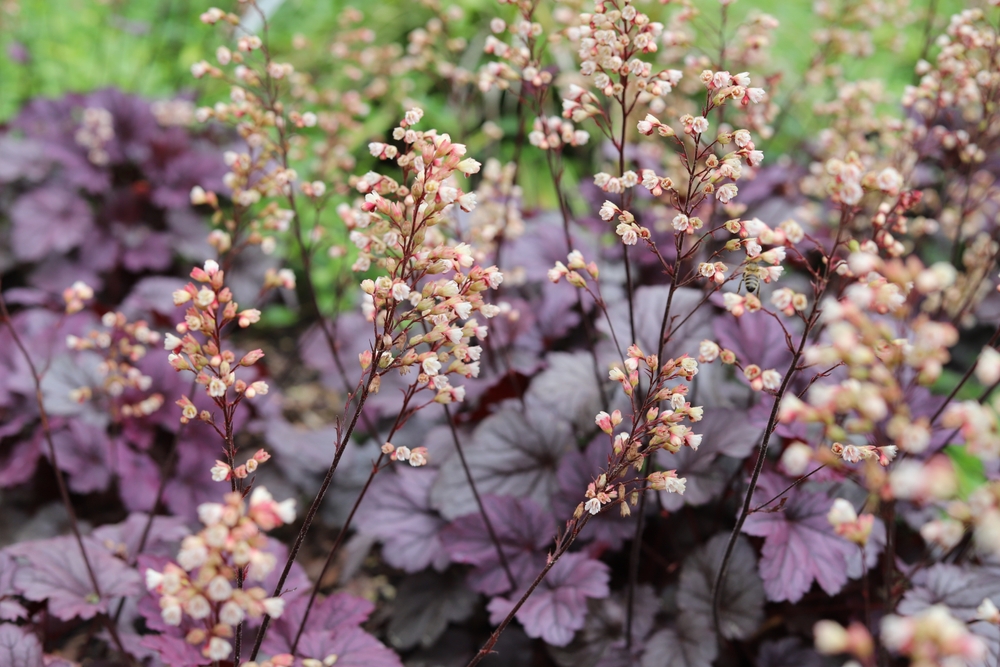
Heuchera, commonly known as Coral Bells, is a shade-loving perennial with colorful foliage and delicate flowers. The plant’s leaves come in a variety of colors, from deep purple to bright lime green, and they retain their vibrant hues throughout the fall. During the fall, the tiny bell-shaped flowers bloom on tall stems, adding even more interest to the plant.
Heuchera thrives in partial to full shade and is relatively drought-tolerant once established. The plant’s foliage continues to stand out in shaded gardens, even as other plants lose their vibrancy. Coral Bells can tolerate a variety of soil types, making them easy to grow. Their ability to brighten shaded spots through the cooler months makes them a favorite among gardeners.
Bleeding Heart (Dicentra)
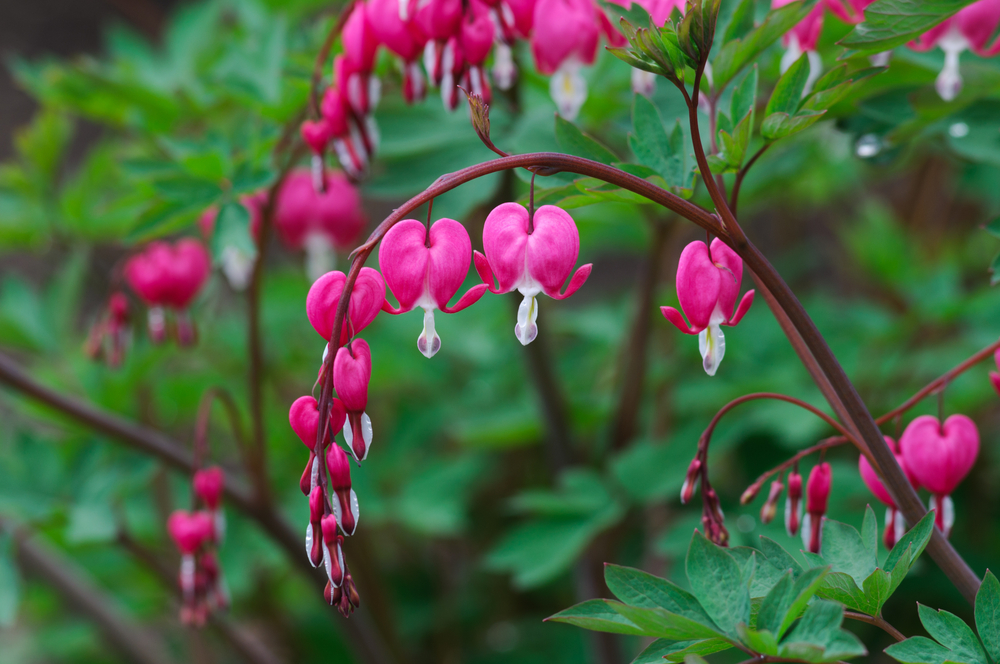
The Bleeding Heart is a classic shade-loving plant known for its unique heart-shaped flowers. The plant produces clusters of delicate pink or white flowers that dangle from arching stems. It thrives in shady areas, adding a touch of elegance to any garden. The flowers last through the summer and into the fall, providing beauty for an extended period.
Bleeding Heart prefers moist, well-drained soil and cool temperatures. It is a great addition to shaded areas that require a bit of color. The attractive green foliage continues to enhance the garden even after the blooms have faded. This perennial is also relatively low-maintenance, making it an ideal choice for gardeners of all skill levels.
Hellebore (Lenten Rose)
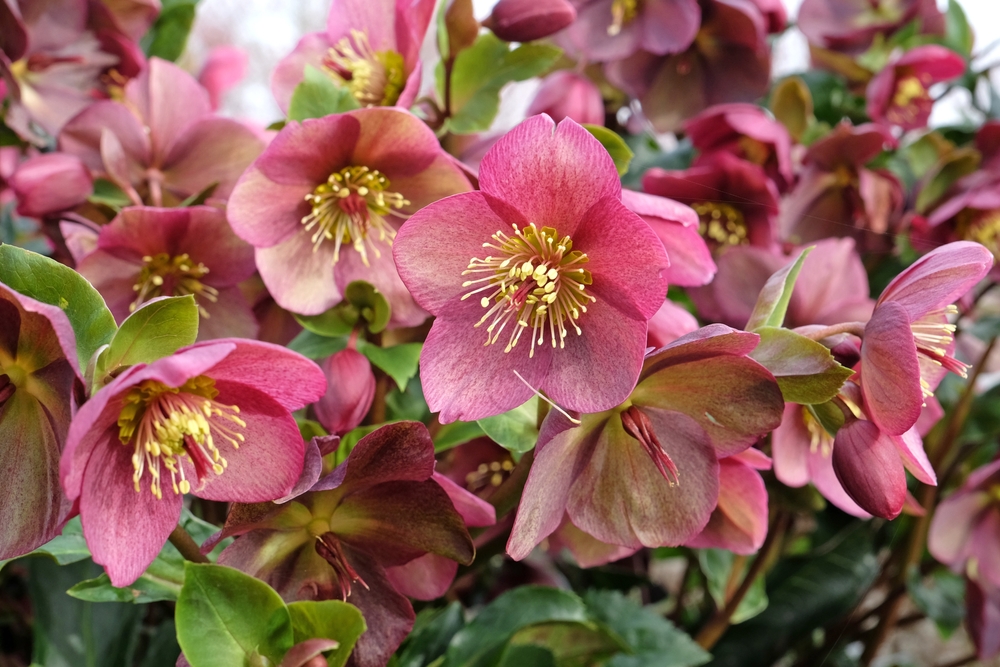
Hellebores, also known as Lenten Roses, are some of the earliest bloomers of the year, but they also continue to thrive well into fall. These shade-loving flowers are known for their beautiful, often marbled blooms in shades of purple, white, and pink. Their blossoms last for several months, starting in late winter and holding their color through the fall.
These hardy plants can tolerate a wide range of soil conditions, as long as they have good drainage. Hellebores are perfect for planting under trees or in areas that receive light to moderate shade. Their evergreen foliage provides year-round interest. This makes them a reliable choice for keeping color in your shaded garden even when fall sets in.
Toad Lily (Tricyrtis)
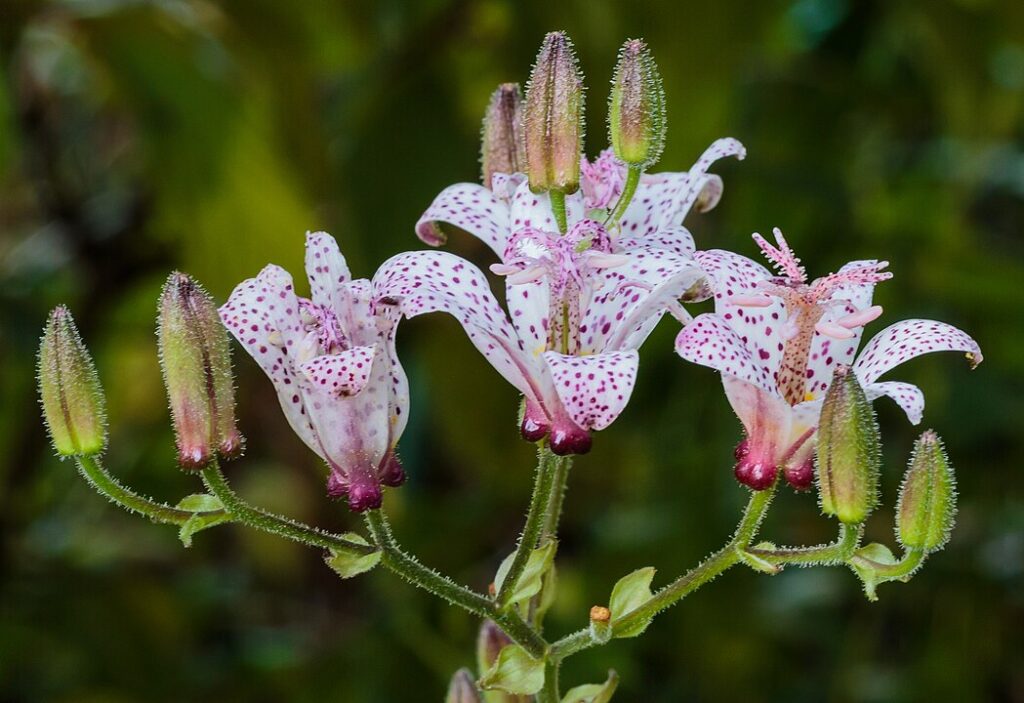
The Toad Lily is a charming fall-blooming flower that thrives in shady, woodland environments. Its unique, speckled flowers bloom from late summer into the fall, making it a standout in any shaded garden. The flowers are often purple, white, or lavender with intricate markings that resemble orchids. These flowers are long-lasting, providing consistent color throughout the fall season.
Toad Lilies prefer moist, well-drained soil and partial to full shade. Their delicate, almost exotic appearance adds a touch of mystery to your garden. They are relatively easy to grow and maintain, making them ideal for beginner gardeners. These flowers thrive in the fall, offering an elegant contrast to other plants that may be slowing down.
Foxglove

Foxglove is a tall, striking flower that thrives in shaded or partially shaded areas. Known for its tall spikes filled with bell-shaped flowers, it blooms in a variety of colors, including pink, purple, and white. Foxglove typically blooms in mid to late summer, but its flowers last well into the fall, adding color to shaded spots.
These plants grow best in moist, well-drained soil and require regular watering to keep the soil consistent. Foxglove’s tall flowers make it a stunning addition to any garden, and its ability to bloom in the fall adds even more appeal. It attracts pollinators like bees and butterflies, making it a valuable plant for both gardeners and wildlife. The flower’s longevity and vibrant colors keep your garden looking lively well into the cooler months.
Lungwort (Pulmonaria)

Lungwort is a shade-loving perennial known for its attractive foliage and colorful spring blooms. Though it typically blooms in early spring, its vibrant leaves stay colorful throughout the year, adding interest to shady garden spots. The plant produces clusters of small, tubular flowers in blue, pink, or purple, which continue to bloom through the fall.
This low-maintenance plant is well-suited to shady gardens with moist, well-drained soil. Lungwort’s foliage is often spotted or variegated, which provides additional visual interest even after the flowers have faded. The leaves remain healthy and colorful through the fall, making it a great year-round option for gardeners. Its ability to thrive in the shade without much care makes it a favorite in woodland or shaded garden settings.
Tiarella (Foamflower)

Tiarella, commonly known as Foamflower, is a delicate perennial that thrives in shaded gardens. It produces spiky clusters of white or pink flowers that resemble foam, adding a soft touch to shady areas. These flowers bloom in early spring and continue into the fall, maintaining their beauty even as the season changes.
Tiarella prefers moist, rich soil and partial to full shade, making it a great choice for woodland gardens. Its delicate foliage, often a deep green with a slight red or bronze tint, stays vibrant through the fall. The plant’s low-growing nature makes it ideal for planting along borders or in ground covers. Foamflower’s ability to keep color and texture in shaded spaces well into the fall makes it a valuable addition to any garden.
Impatiens
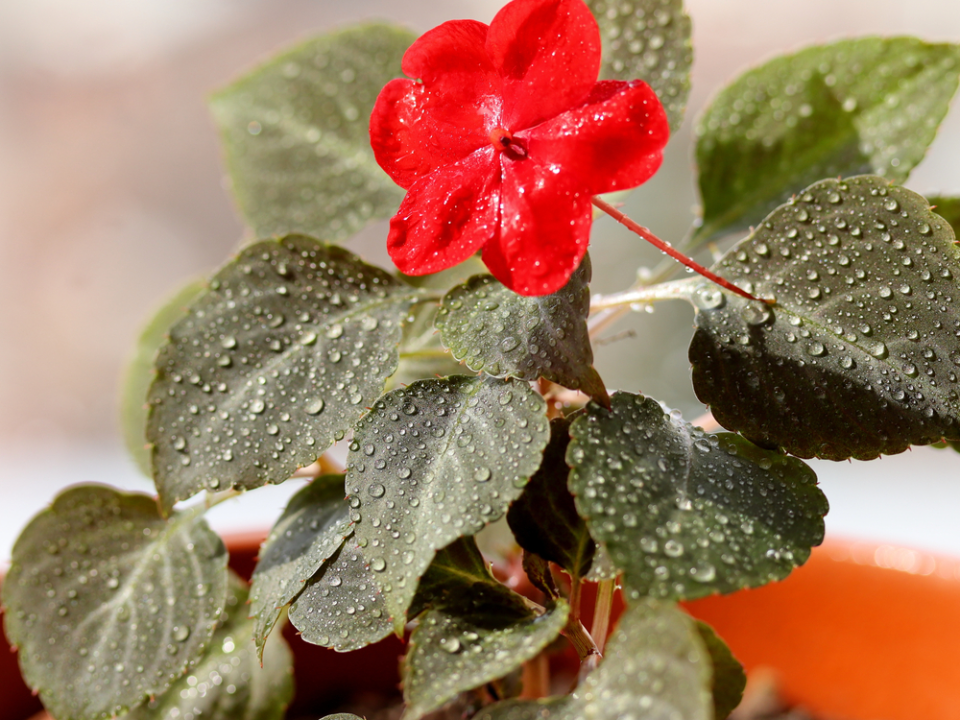
Impatiens are a popular choice for adding color to shaded areas, and they continue to bloom well into fall. These plants produce bright, colorful flowers in shades of pink, red, purple, and white. They are ideal for gardens with little to no direct sunlight, thriving in moist, well-drained soil. Impatiens’ ability to maintain their color through the fall makes them a favorite for shaded gardens.
These flowers are easy to grow and require minimal care, making them perfect for beginner gardeners. They grow quickly, covering the ground with vibrant blooms that last for months. Impatiens attract pollinators like bees and butterflies, making them a great addition to a pollinator-friendly garden. Their ability to keep your shaded spaces colorful through fall adds lasting beauty to your garden.
Columbine (Aquilegia)

Columbine is a unique flower that thrives in shaded garden spots. It produces delicate, spurred blooms in colors ranging from blue and purple to pink and white. Columbine’s flowers bloom in spring and continue to provide color through the fall, especially in cooler climates. Their ability to thrive in shade while retaining vibrant color makes them a great choice for shaded areas.
This perennial prefers moist, well-drained soil and partial shade. It is relatively low-maintenance and can tolerate a variety of soil types, making it adaptable to different garden conditions. Columbine attracts pollinators like hummingbirds and bees, which help keep the garden buzzing with life. Its delicate, nodding flowers add elegance to shaded spaces, especially in the fall when other plants are starting to fade.
Lobelia

Lobelia is an elegant, trailing plant that thrives in partial shade. It produces vibrant blue, purple, or white flowers that bloom throughout the summer and into the fall. This plant is perfect for hanging baskets, containers, or as a ground cover, providing color in shaded areas where other plants might not thrive. The flowers are long-lasting, adding a splash of color even as fall sets in.
Lobelia does well in moist, well-drained soil and can tolerate some light sun, but it prefers shaded spots. It grows quickly, creating a dense mat of color that can be an attractive addition to your garden. Lobelia also attracts pollinators like bees and butterflies, adding extra value to your garden’s ecosystem. Its ability to thrive in shady areas while maintaining vibrant blooms through fall makes it a great option for brightening up those dim spots.
Sweet Woodruff

Sweet Woodruff is a low-growing perennial that thrives in shaded garden spaces. Known for its star-like white flowers, this plant blooms in early spring and continues to grow lush green foliage through the fall. Its small, fragrant blooms add a touch of sweetness to shady areas. Sweet Woodruff can be planted under trees or shrubs to help fill in those tough-to-grow spots.
This plant prefers moist, well-drained soil and grows best in partial to full shade. Its green leaves have a slight fragrance, adding a nice touch to shaded corners of the garden. Sweet Woodruff is also known for its ability to suppress weeds, making it a great ground cover. Its low-maintenance nature and ability to thrive in shade make it an ideal plant for shaded gardens that need year-round interest.
Corydalis
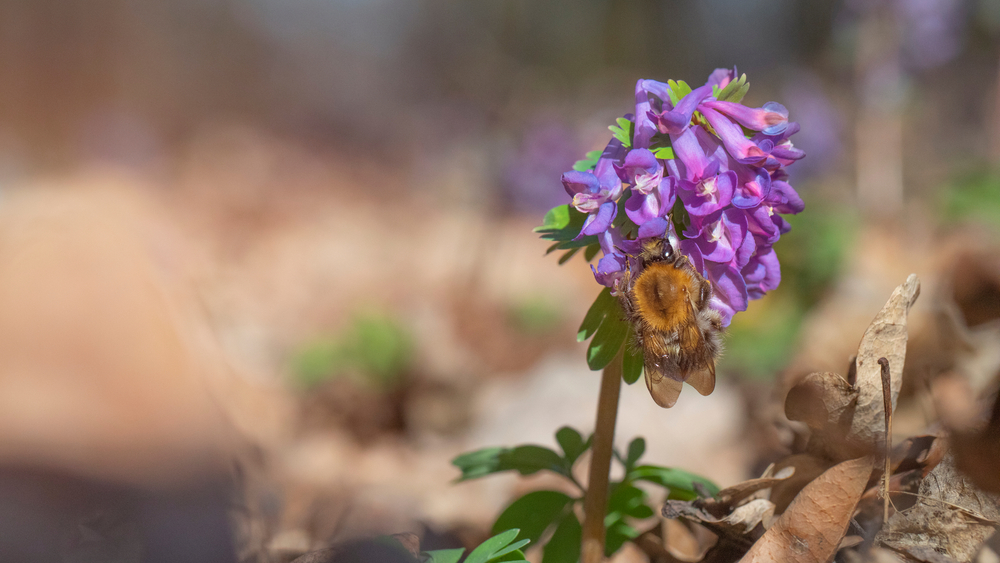
Corydalis is a perennial that thrives in partial to full shade, making it ideal for woodland gardens. The plant produces small, tubular flowers in shades of yellow, blue, or purple, which bloom in early spring and continue into the fall. The delicate, fern-like foliage adds texture to the garden, even when the flowers are not in bloom.
Corydalis prefers well-drained, moist soil and is relatively easy to grow. It does best in cooler climates, where it can continue to bloom well into the fall. This plant’s ability to thrive in shaded spots and bloom for an extended period makes it a great choice for any shaded garden. Its bright flowers and feathery foliage provide both color and texture to the garden year-round.
Vinca Minor (Periwinkle)
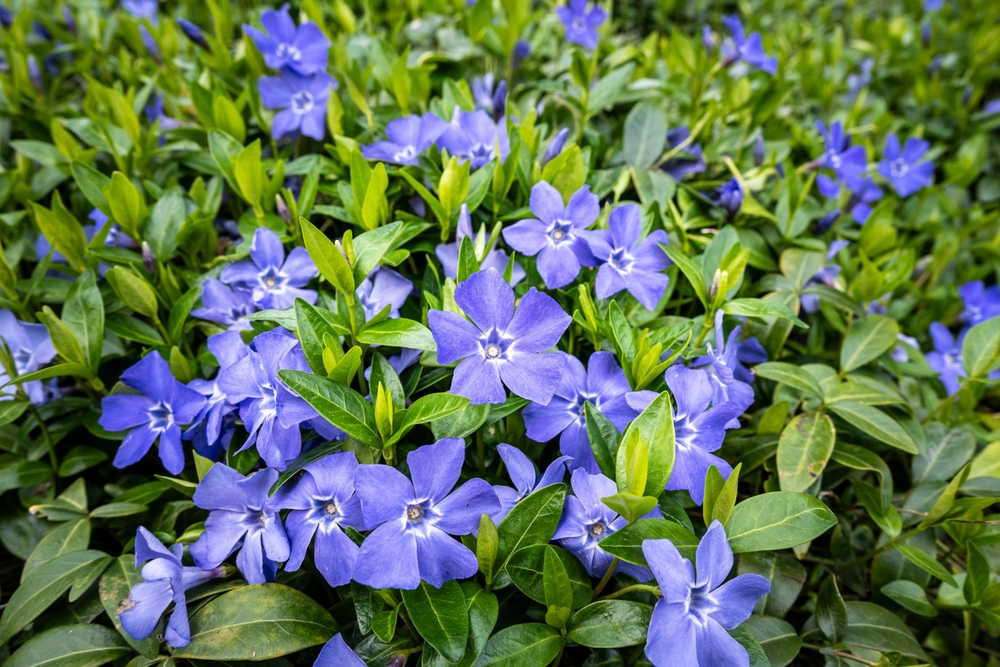
Vinca Minor, commonly known as Periwinkle, is a hardy ground cover plant that thrives in shaded areas. It produces small, vibrant blue or purple flowers that bloom in spring and continue through the fall. The plant’s glossy, evergreen leaves provide year-round interest, even after the flowers have faded. Its ability to cover the ground quickly and maintain its color through the cooler months makes it perfect for shaded areas.
This plant is very low-maintenance and tolerates a variety of soil conditions. Vinca Minor is ideal for planting in spots where grass or other groundcovers struggle to grow. It does well in both dry and moist conditions, making it versatile for different garden environments. As a shade-loving perennial, it offers consistent color and coverage, even into the fall.
This article originally appeared on Avocadu.
